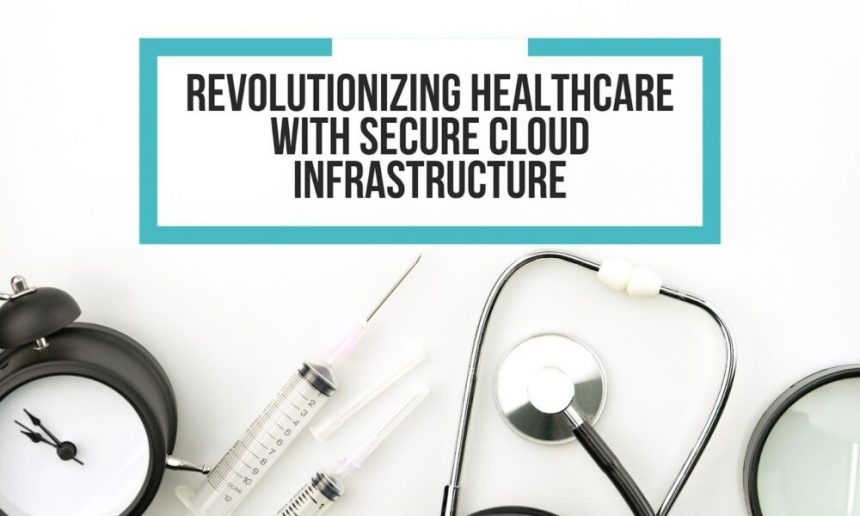In the era of digital transformation, cloud computing has become an essential component of modern healthcare systems. Deneesh Narayanasamy, a researcher specializing in cloud security and healthcare IT, explores how secure cloud infrastructure enables innovation while addressing critical challenges like data protection, compliance, and operational efficiency. His work highlights the potential of cloud technology in advancing healthcare delivery and improving patient outcomes.
The Growing Role of Cloud Computing in Healthcare
The adoption of cloud computing in healthcare is accelerating, with the global healthcare cloud computing market projected to reach $101.11 billion by 2028, growing at a compound annual rate of 19.4%. Approximately 83% of healthcare organizations have embraced cloud-based solutions, reporting a 94% improvement in operational efficiency and patient care delivery. These systems enhance scalability to manage fluctuating demand.
Key Components of a Secure Healthcare Cloud
Identity and Access Management (IAM)
IAM systems are crucial for safeguarding patient data and ensuring secure access across healthcare networks. Role-based access control (RBAC) and multi-factor authentication (MFA) reduce security breaches, cutting unauthorized access attempts by 71%. Continuous monitoring and automatic access revocation mechanisms identify risks early, improving compliance by 60% and enabling organizations to meet regulatory standards.
Data Protection and Encryption
Healthcare organizations face rising threats to sensitive data, with breaches costing an average of $10.1 million per incident. End-to-end encryption protocols, tokenization, and data masking strategies protect patient information across multi-cloud environments. Organizations adopting comprehensive data protection frameworks report a 64% reduction in breach attempts and a 79% improvement in security compliance.
Network Security
Microsegmentation and advanced network monitoring systems have transformed healthcare IT security. These measures reduce the attack surface by 70%, while intrusion detection systems enable faster threat identification, reducing detection time to under four hours. DDoS protection and secure remote access tools ensure uptime during cyberattacks, maintaining service availability at 99.99%.
Supporting Innovations in Healthcare Delivery
Telemedicine Infrastructure
Cloud computing has revolutionized telemedicine, enabling platforms to manage an average of 781,000 daily virtual consultations. These systems provide real-time video conferencing with 99.98% uptime, enhancing patient engagement by 71% and reducing hospital readmissions by 38%. Telemedicine integration with wearable health devices improves chronic disease management, decreasing emergency visits by 29%.
Electronic Health Records (EHR)
Modern EHR systems leverage cloud capabilities to centralize patient data, improving accessibility by 64% and cutting clinical documentation time by 43%. Cloud-based solutions support scalable storage, efficiently handling a 52% annual growth in medical imaging data while maintaining high performance. Automated backups and disaster recovery systems reduce recovery times to under 45 minutes, ensuring continuous access to critical patient information.
AI and Machine Learning in Healthcare
AI-powered diagnostic tools, supported by cloud infrastructure, have improved diagnostic accuracy by 39% and reduced time-to-diagnosis for complex cases by 45%. Scalable cloud resources process over 84,000 medical images daily, enabling faster clinical decisions. Predictive analytics identify health risks 42 days earlier than traditional methods, enhancing preventive care while maintaining regulatory compliance.
Ensuring Compliance and Data Integrity
Compliance remains a top priority for healthcare organizations leveraging cloud solutions. Automated compliance monitoring systems reduce audit preparation times by 55% and improve regulatory adherence by 62%. Blockchain technology enhances data integrity, reducing discrepancies by 71% and improving cross-facility record sharing by 76%. These advancements ensure secure, seamless data exchange while meeting evolving regulatory requirements.
Emerging Trends in Healthcare Cloud Technology
Emerging technologies like edge computing and IoMT (Internet of Medical Things) are shaping the future of healthcare. Edge-enabled monitoring systems process patient data within 150 milliseconds, reducing latency by 65% and improving real-time alert accuracy by 59%. IoMT devices enhance monitoring efficiency by 52% and reduce routine check-ups by 48%, enabling continuous care with early intervention capabilities. These advancements support personalized medicine and improve overall healthcare delivery.
In conclusion, Deneesh Narayanasamy underscores the pivotal role of secure cloud infrastructure in transforming healthcare systems. By integrating advanced security frameworks, scalable storage, and innovative technologies like AI and IoMT, healthcare providers can deliver more efficient, secure, and personalized care. As the industry evolves, cloud computing will remain a cornerstone of innovation, empowering organizations to improve patient outcomes and address the challenges of modern healthcare.








